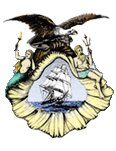
The Navy Department Library
- SACO
- Expand navigation for Sailors as Infantry in the US Navy Sailors as Infantry in the US Navy
- The Sailors Creed
- Samoan Hurricane
- A Sampling of U.S. Naval Humanitarian Operations
- Expand navigation for Seabee History Seabee History
- Secretary of the Navy's Report for 1900 on the China Relief Expedition
- Expand navigation for Selected Documents of the Spanish American War Selected Documents of the Spanish American War
- Battle of Manila Bay
- Battle of Manila Bay: Miscellaneous Documents
- Olympia in Battle of Manila Bay
- Raleigh in Battle of Manila Bay
- Concord in Battle of Manila Bay
- Baltimore in Battle of Manila Bay
- Petrel in Battle of Manila Bay
- Boston in Battle of Manila Bay
- McCulloch in Battle of Manila Bay
- U.S. Consul at Manila
- Official Spanish Report on Battle of Manila Bay
- Expand navigation for Selected Groups in the Republic of Vietnam Selected Groups in the Republic of Vietnam
- Seventh Amphibious Force - Command History 1945
- Shelling of the Alaskan Native American Village of Angoon, October 1882
- Ship to Shore Movement
- Ship Shapes Anatomy and types of Naval Vessels
- Shipboard Ettiquette [Naval R. O. T. C. Pamphlet No. 16]
- Shiploading - A Picture Dictionary
- Expand navigation for Ships named for Individual Sailors Ships named for Individual Sailors
- Ships Present at Pearl Harbor
- Ships Sunk and Damaged in Action during the Korean Conflict
- A Short Account of the Several General Duties of Officers, of Ships of War: From an Admiral, Down to the Most Inferior Officer
- Short Guide to Iraq
- The Sicilian Campaign, Operation 'Husky'
- Signals for the Use of the Navy of the Confederate States
- Sinking of C.S.S. Alabama by U.S.S. Kearsarge - 19 Jun 1864
- Expand navigation for Sinking of the Bismarck Sinking of the Bismarck
- Sinking of the USS Guitarro
- The Sinking of the USS Housatonic by the Submarine CSS H.L. Hunley
- Expand navigation for Sinking of USS Indianapolis - Press Releases & Related Sources Sinking of USS Indianapolis - Press Releases & Related Sources
- Expand navigation for Skill in the Surf: A Landing Boat Manual Skill in the Surf: A Landing Boat Manual
- Chapter I. Landing Boats Are Important!
- Chapter II. Landing Craft From Troy to Tokio
- Chapter III. Know Your Boat!
- Chapter IV. Know Your Job!
- Chapter V. Keep It Running!
- Chapter VI. The Coxswain Takes Over
- Chapter VII. Learning the Ropes
- Chapter VIII. The Salvage Boat
- Chapter IX. Where Sea Meets Land
- Chapter X. Hit That Beach!
- Chapter XI. Information, Please!
- Appendix A
- Appendix B
- Appendix C
- Appendix D
- Appendix E
- Appendix F
- Appendix G
- Appendix H
- Appendix I
- Appendix J
- Skunks, Bogies, Silent Hounds, and the Flying Fish
- Slapton Sands: The Cover-up That Never Was
- Small Wars Their Principles and Practice
- Smith, Melancton Rear Admiral USN A Memoir
- Smoker Sat., July 27, 1918 U.S.S. Arizona
- So You are Going to the South Pacific?
- Soldier's Guide Bosnia-Herzegovina
- Solomon Islands Campaign: I The Landing in the Solomons
- Solomon Islands Campaign: II Savo Island & III Eastern Solomons
- Solomon Islands Campaign: IV Battle of Cape Esperance
- Solomon Islands Campaign VII Battle Tassafaronga
- Solomon Islands Campaign IX Bombardments of Munda and Vila-Stanmore
- Solomon Islands Campaign: X Operations in the New Georgia Area 21 June-5 August 1943
- Solomon Islands Campaign: XI Kolombangara and Vella Lavella 6 August - 7 October 1943
- Solomon Islands Campaign XII The Bougainville Landing and the Battle od Empress Augusta Bay, 27 October - 2 November 1943
- Some Experiences Reported by the Crew of the USS Pueblo and American Prisoners of War from Vietnam
- Some Memorandums Construction of Ships Frederick Tudor
- Somers, essay on legal aspects of Somers Affair
- Sources on US Naval History by State
- Expand navigation for Spanish American War Spanish American War
- Report of the Secretary of the Navy, 1898 Part 1
- Report of the Secretary of the Navy, 1898 Part 2
- Report of the Secretary of the Navy, 1898 Part 3
- Report of the Secretary of the Navy, 1898 Part 4
- Report of the Secretary of the Navy, 1898 Part 5
- Report of the Secretary of the Navy, 1898 Part 6
- Report of the Secretary of the Navy, 1898 Part 7
- Report of the Secretary of the Navy, 1898 Part 8
- Report of the Secretary of the Navy, 1898 Part 9
- Report of the Secretary of the Navy, 1898 Part 10
- Report of the Secretary of the Navy, 1898 Part 11
- Report of the Secretary of the Navy, 1898 Part 12
- Report of the Secretary of the Navy, 1898 Part 13
- Report of the Secretary of the Navy, 1898 Part 14
- Spanish-American War; War Plans and Impact on U.S. Navy
- Special Order 1865 April 17 Assemblage of Officers to Attend
- Special Order 1865 April 17 Navy Department Closure
- Special Order 1865 April 17 Officers to Attend Funeral
- Special Order 1865 April 20 List of Officers to Accompany Remains
- Special Order No. 73 - 1905 April 18 Travel Pay
- Expand navigation for Specifications for Ship and Motor Boat Bells Specifications for Ship and Motor Boat Bells
- Sports in the Navy: 1775 to 1963
- Stalin's Cold War Military Machine: A New Evaluation
- Statement Regarding Winds Message
- The Story Of The Confederate States' Ship Virginia
- Strait Comparison: Lessons Learned from the 1915 Dardanelles Campaign
- Strategic Concepts of the U.S. Navy (NWP 1 A)
- Striking the Flag
- Structural Repairs in Forward Areas During WWII
- Study of the General Board of the U.S. Navy, 1929-1933
- Submarine Activities Connected with Guerrilla Organizations
- Expand navigation for Submarine Sighting Guide ONI 31-2A Submarine Sighting Guide ONI 31-2A
- Submarine Sighting Guide ONI 31SS-Rev. 1
- Submarine Silhouette Book No. 1
- Submarine Turtle Naval Documents
- Surprised at Tet: U.S. Naval Forces in Vietnam, 1968
- Survey of the Amazon- Selfridge
- Survival of the Collection of the Navy Department Library
- Syria's Chemical Weapons: Issues for Congress
Appendix E
Use of the Clutch on the Gray Marine Diesel Engine
Most of the Gray Marine diesels which you are likely to use are equipped with one of two clutches. The first of these is a friction-type clutch which makes use of two clutch plates for which it is called the twin-disc clutch.
When shifting it is absolutely necessary that the engine be run at idling speed. Also, the shift lever should either be in the full forward or full reverse position. If the clutch is not fully engaged the clutch plate will slip between the flywheel and the pressure plate causing destructive and unnecessary wear. Also, the screw shaft and screw will not respond normally if the clutch is not fully engaged and boat handling is difficult.
When the clutch is engaged while the engine is running at high speed the same kind of damage occurs to the clutch. Great friction is caused and wear and warping results. Finally, when the clutch is engaged at an excessive speed the sudden overload throws a great strain on the engine and may require repair work on the diesel.
The twin-disc clutch has no manual adjustment. This is an additional reason for proper, careful shifting. Remember, haste may cause a delaying breakdown or leave you helpless in the surf, so go easy on that shift lever.
The Borg-Warner clutch is the second type commonly found on the Gray Marine Diesel. It works on the same principle as an automobile transmission, transmitting engine power to the propeller shaft by means of gears.
The coxswain must pause for a moment in neutral while shifting with a Borg-Warner clutch. This is due to the fact that gears cannot be meshed safely while one or the other is revolving without chipping or breaking gear teeth. When the shift lever is in neutral it releases the plate from the flywheel, thus permitting the transmission gear to stop spinning and engage smoothly after about two seconds.
With the Borg-Warner clutch it also is necessary that the shift lever be in full forward or full reverse position. Otherwise a partially engaged gear may slip and strip the gear teeth. If the engine is speeded up when shifting, the gears will spin longer and make it necessary for the coxswain to leave the shift lever in neutral for several additional seconds when shifting to another position.
--101--
[End of Appendix E]
Footnotes

- Accessibility/Section 508 |
- Employee Login |
- FOIA |
- NHHC IG |
- Privacy |
- Webmaster |
- Navy.mil |
- Navy Recruiting |
- Careers |
- USA.gov |
- USA Jobs
- No Fear Act |
- Site Map |
- This is an official U.S. Navy web site


